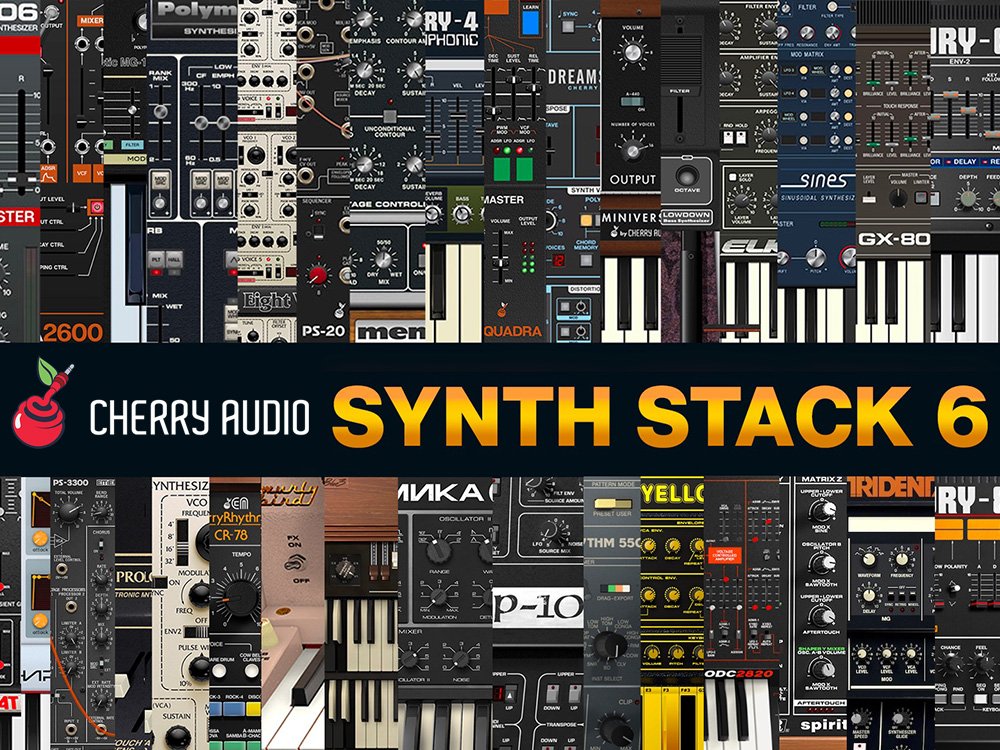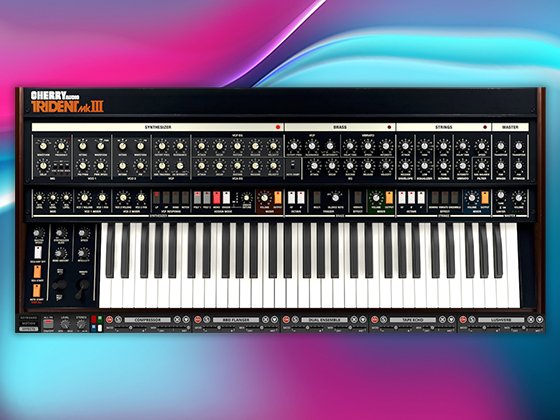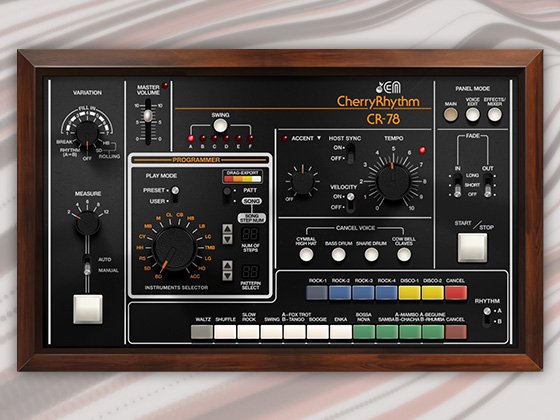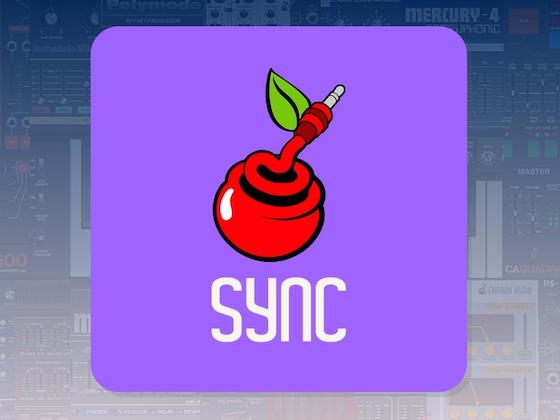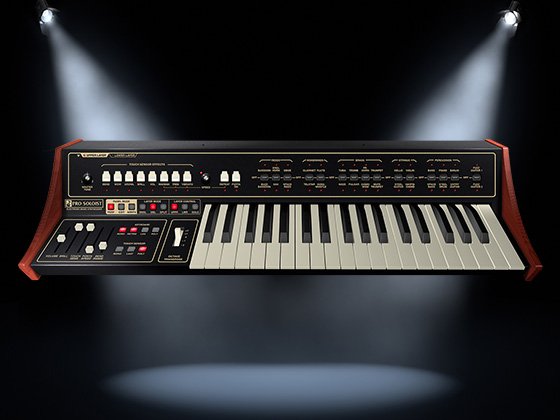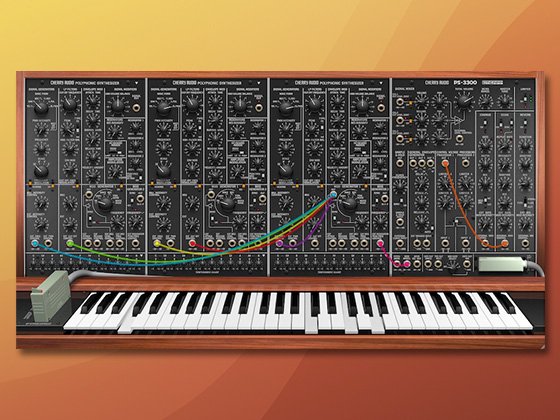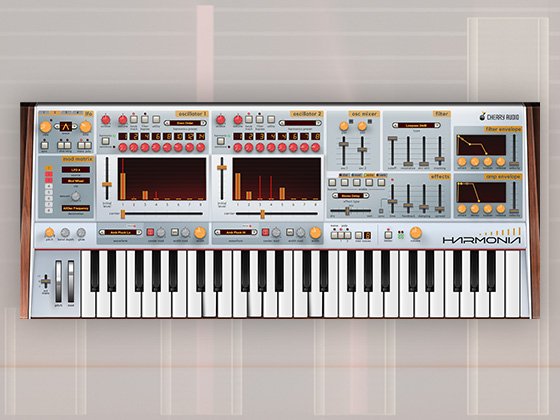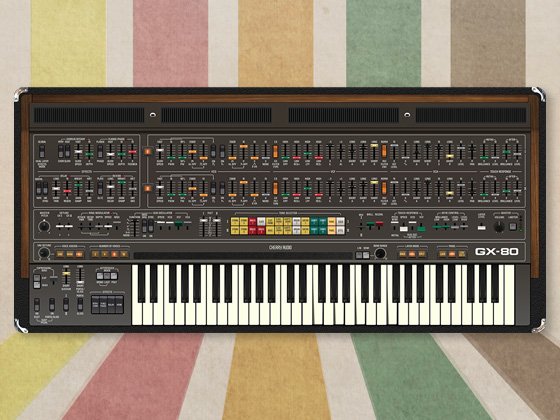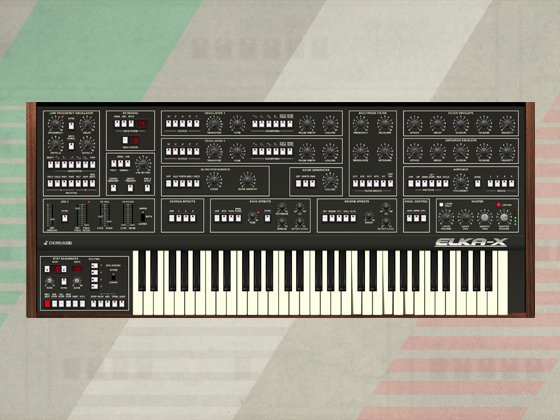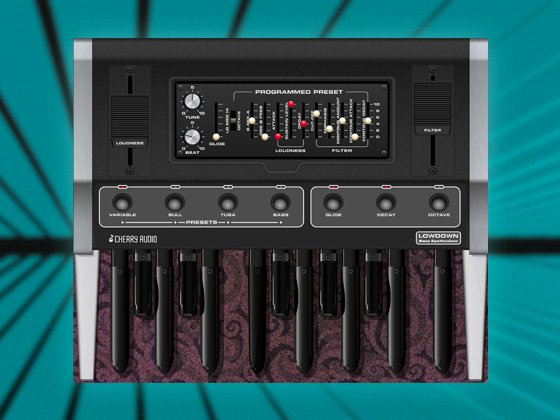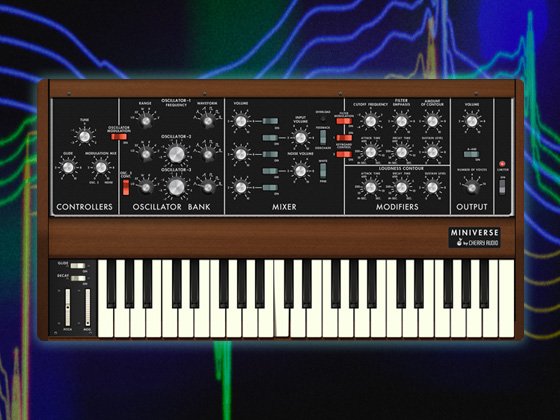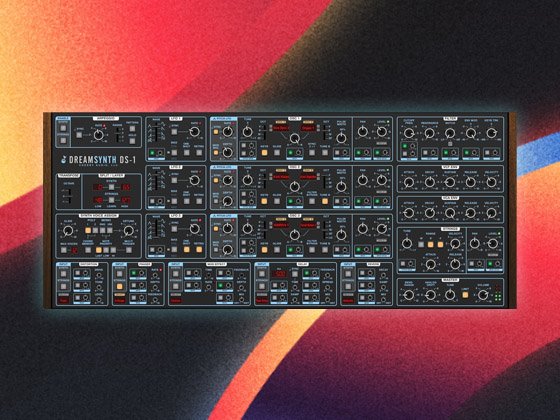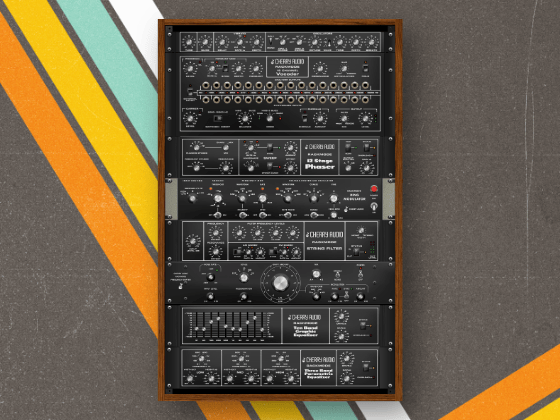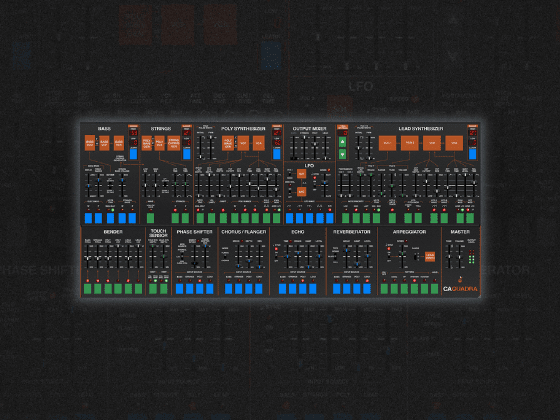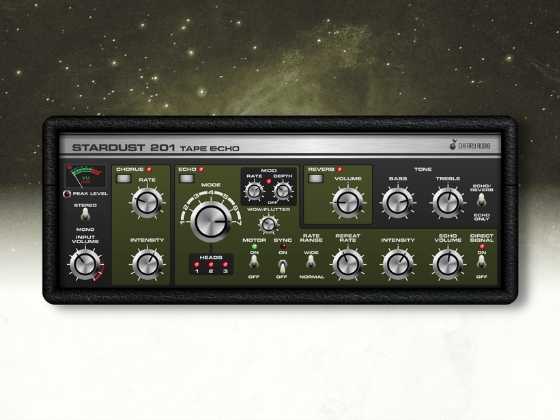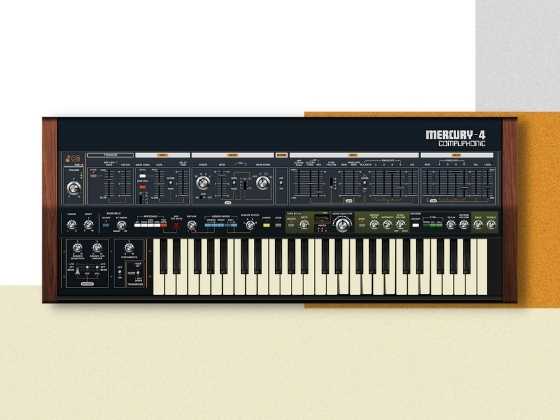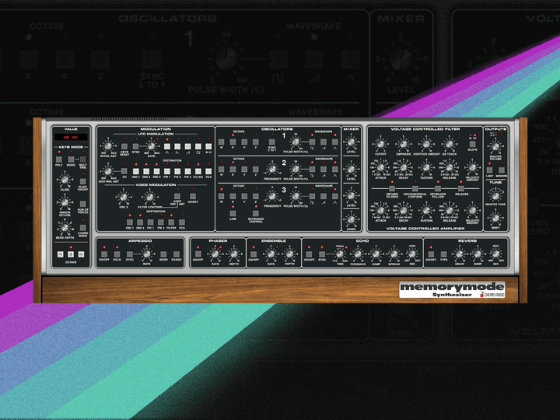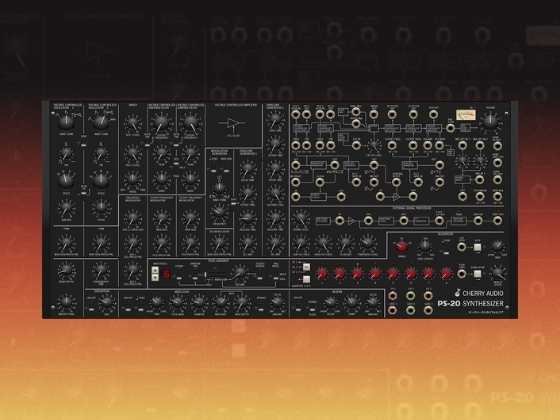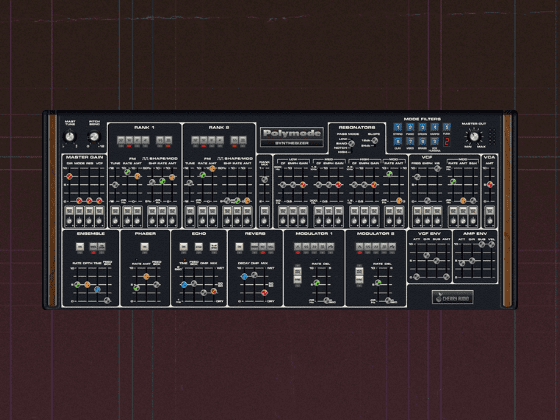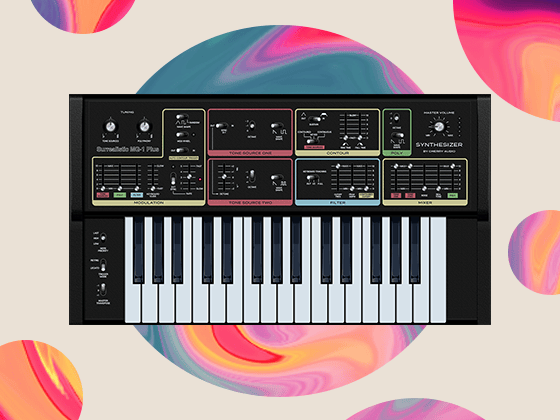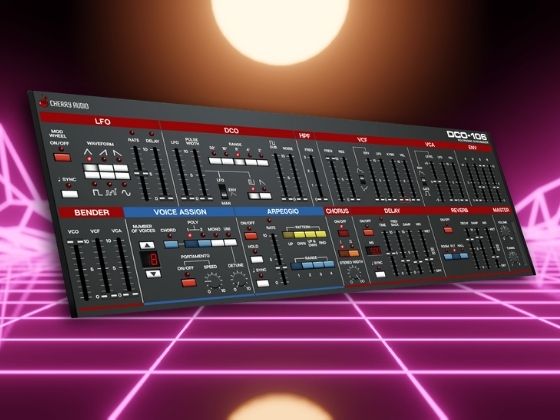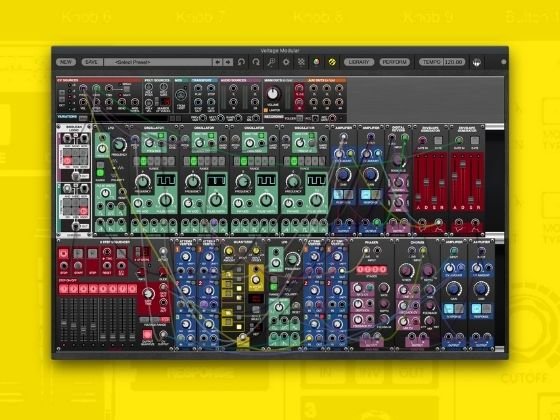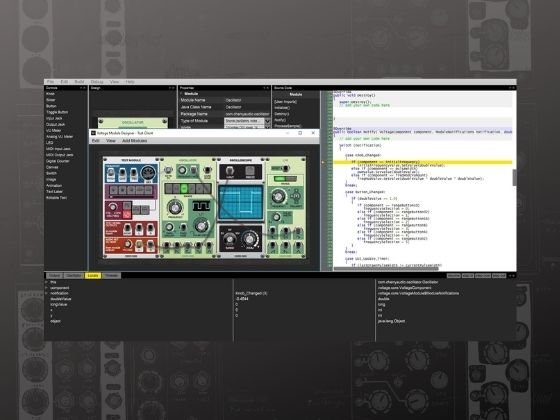Manufacturer: Request For Music
$24.50 $27.50
O V E R A L L . D E S C R I P T I O N
F_HRMNX contains 64 oscillators (from 0 to 63), each with ADSR, phase, coarse and fine tuning.
Normally all oscillators (that can be switched on or off on the ACTive panel) follow harmonic settings,
They can however be set to other temperament setting, like thirds, where every oscillator goes up a third from the 0 or base-socillator.
You can set modulation routes where a harmonic (say nr 1) can be used to send its output to the phase input of harmonic 0.
This way Phase modulation sounds like the DX7 can be created...
There are 16 External inputs available that can be used in the modulation routes as Sources as well..
For a modulation route, you select a SOURCE harmonic, a SOURCE like OUTPUT, ENVOUT etc, than set a TARGET harmonic and a TARGET like COARSE or PHASE and press ADD to add or UPD to update the currently active route, where the DEPTH dial decides how strong the modulation will be.
REM removes the current route... the UP and DOWN buttons go through the list and the orange bar highlights the currently active route. When that route is reflected in the buttons, you can change values and UPDate or set new values and ADD to the list.
M A I N . F R E Q U E N C Y . S E T T I N G S
FREQ.SCALE==========================================================:
The oscillators can be set to a variety of presets, for different 'scales' or 'frequency modes':
HARMONIC
Frequency = baseFreq (i + 1)
Each harmonic is an integer multiple of the base frequency. This produces the natural harmonic series, typical in acoustic instruments.
TET6
Frequency = baseFreq 2^(i / 6)
Each harmonic is a pitch step in 6-tone equal temperament — the octave is divided into 6 equal parts. Sounds exotic and non-Western.
TET8
Frequency = baseFreq 2^(i / 8)
8-tone equal temperament. Balanced between familiar and microtonal. Offers more dissonance than TET12.
TET10
Frequency = baseFreq 2^(i / 10)
10 equal steps per octave. Quirky and dissonant intervals; often used in experimental microtonality.
TET12
Frequency = baseFreq 2^(i / 12)
12-tone equal temperament — standard Western tuning system. This aligns harmonics with musical semitones.
TET17
Frequency = baseFreq 2^(i / 17)
A microtonal scale with 17 equal steps per octave. Closer spacing gives more subtle pitch variations.
TET19
Frequency = baseFreq 2^(i / 19)
More resolution than TET17. Close to just intonation for some intervals; good for alternative harmony.
TET22
Frequency = baseFreq 2^(i / 22)
Indian-influenced microtonality, allowing finer pitch control for traditional ragas or drones.
TET24
Frequency = baseFreq 2^(i / 24)
Quarter-tone scale. Each step is half a semitone. Common in Arabic, Turkish, and modern microtonal music.
TET31
Frequency = baseFreq 2^(i / 31)
Used in meantone temperament and early music. More closely approximates just intervals than TET12.
TET36, TET48, TET53, TET64
Frequency = baseFreq 2^(i / N)
Higher-resolution equal temperament scales:
• TET36: 1/3 semitones
• TET48: 1/4 semitones
• TET53: highly accurate for just intervals
• TET64: extreme microtonality; very small steps for drones, textures, or spectral effects.
HALF_STEP
Frequency = baseFreq (2^(1/12))^i
Same as TET12. Included for naming clarity if “step-based” logic is used.
WHOLE_STEP
Frequency = baseFreq (2^(2/12))^i
Each step is a whole tone (2 semitones). Matches the whole-tone scale (Debussy, dream-like feel).
MAJOR_THIRD
Frequency = baseFreq (2^(4/12))^i
Each step jumps a major third — creates augmented triad-based harmony.
GOLDEN_RATIO
Frequency = baseFreq φ^i, where φ ≈ 1.618
Frequencies follow the Golden Ratio. Very non-repeating, quasi-fractal spectral quality.
SUBHARMONIC
Frequency = baseFreq / (i + 1)
Inverts the harmonic series — subharmonics. Emphasizes low resonances. Useful in bass-focused or drone synthesis.
RANDOM_PARTIALS
Frequency = baseFreq (1 + random())
Each harmonic gets a random pitch. Produces inharmonic, metallic, or chaotic textures.
FM_RATIO
Frequency = baseFreq 2^(i / 7)
Like a fixed FM ratio chart. Frequencies follow a stepped FM synthesis scale, creating bell-like or rich spectra.
JUST_INTONATION
Frequency = baseFreq justRatios[i % len]
Cycles through simple fractional ratios like 3:2, 5:4. Aligns harmonics with mathematically pure intervals.
BOHLEN_PIERCE
Frequency = baseFreq bpRatios[i % len]
Uses the Bohlen-Pierce scale, which divides a tritave (1:3) into 13 equal steps. Very alien sound.
OTONAL
Frequency = baseFreq ((i + 1) / 1.0)
Same as HARMONIC. Included for clarity if otonal/utonal pairs are being contrasted.
UTONAL
Frequency = baseFreq / (i + 1)
Inverted OTONAL. More subharmonic emphasis — inverse harmonic series.
SCHUMANN_RESONANCE
Frequency = 7.83 (i + 1)
All harmonics are multiples of 7.83 Hz (the Earth’s EM resonance). Deep, earthy, atmospheric tones.
SLENDRO
Frequency = baseFreq slendroRatios[i % 5]
Balinese scale with 5 tones per octave. Very characteristic of gamelan music.
v
PELOG
Frequency = baseFreq pelogRatios[i % 7]
Balinese/Javanese 7-tone scale. Tones are unequal — creates exotic and expressive harmonic textures.
QUARTER_TONE
Frequency = baseFreq 2^(i / 24)
Redundant with TET24. Listed separately for clarity or alternate UI labelling.
FRACTAL_HARMONICS
Frequency = baseFreq randomFractalFactor
Frequencies generated by fractal noise/random functions. Irregular, evolving spectra — excellent for organic timbres.
UNISON
Frequency = baseFreq for all harmonics
Every harmonic has exactly the same frequency. Extremely phase-rich, powerful tone. Great for drones or phase tricks.
LOG_HARMONICS
Frequency = baseFreq log(i + offset)
Frequencies follow a logarithmic curve. Spaced more naturally for psychoacoustics or stretched-pitch effects.
H A R M O N I C . S E L E C T I O N
HARM.PRESETS========================================================
You can also use presets to decide what harmonics to hear:
BASIC
Basic harmonic selection - includes fundamental and primary harmonics.
ALL
All harmonics - includes the full harmonic series.
EVEN
Even harmonics only - includes only the 2nd, 4th, 6th, etc.
ODD
Odd harmonics only - includes only the 1st, 3rd, 5th, etc.
OCTAVES
Octave harmonics - selects only harmonics that are octaves of the fundamental (1, 2, 4, 8...).
FIFTHS
Fifth-based harmonics - selects harmonics related to the perfect fifth (3/2 ratio).
TRIAD
Triadic harmonics - selects harmonics forming a major or minor triad.
POWERCHORD
Power chord harmonics - includes fundamental, fifth, and octave.
RANDOM_5
Selects 5 random harmonics - useful for varied timbres.
RANDOM_10
Selects 10 random harmonics - creates a fuller but randomized harmonic content.
FORMANT
Formant harmonics - selects harmonics that emphasize vowel-like resonances.
BELL
Bell-like harmonics - mimics the harmonic structure of bells.
CLUSTER
Dense cluster of harmonics - creates a thick, noisy texture.
SPARSE
Sparse harmonics - selects a few widely spaced harmonics for an airy sound.
M A I N . V O L U M E . S E T T I N G
CONTOUR============================================================:
And the harmonics can be set to sort of an overall volume response....
In this dropdown menu you can choose the following
FLAT
Amplitude = 1.0 (for all harmonics)
All harmonics are equally strong. Creates an extremely rich, harsh spectrum. Useful for noise-like or highly metallic textures.
SAWTOOTH
Amplitude = 1.0 / harmonicNumber
Classic harmonic falloff. The first harmonic is loudest, and each subsequent harmonic drops in amplitude proportionally to its number. Produces a bright, rich timbre.
SQUARE
Amplitude = 1.0 / harmonicNumber (only for even-numbered harmonics)
Only even-numbered harmonics are active. Odd-numbered harmonics are muted. Produces a hollow, woody tone typical of square waves.
TRIANGLE
Amplitude = 1.0 / (harmonicNumber²) (only for even-numbered harmonics)
Even harmonics are kept, but their amplitudes drop off much faster. Creates a soft, rounded sound—less bright than saw or square.
INVERTED_SAWTOOTH
Amplitude = harmonicNumber / totalHarmonics
The opposite of SAWTOOTH: higher harmonics become louder. Can create a reversed brightness that emphasizes spectral extremes.
SINE_BUMP
Amplitude = sin(π i / (totalHarmonics - 1))
Creates a single bell-shaped bump centered in the harmonic spectrum. Quiet at both ends, loudest in the middle.
DOUBLE_SINE
Amplitude = 0.5 (1 + sin(2π i / (totalHarmonics - 1)))
Two peaks: left and right sides have louder harmonics; the center dips. Creates a scooped midrange sound.
RISING_EXPONENTIAL
Amplitude = x^2.5, where x = i / (totalHarmonics - 1)
Quiet in the low harmonics, rising steeply toward the high end. Useful for reversed effects or non-traditional brightness profiles.
ODD_BUMP
Amplitude = sin(π x) only for odd harmonics
Similar to SINE_BUMP but applies only to odd-numbered harmonics. Emphasizes mid-range odd partials.
EDGE_BOOST
Amplitude = 1.0 for outermost 4 harmonics; 0.1 elsewhere
Only harmonics at the spectral “edges” are loud. Emphasizes low and high harmonics while suppressing the middle.
EXPONENTIAL_DECAY
Amplitude = 0.9^i
Each harmonic’s amplitude decays exponentially. Similar to SAWTOOTH but faster falloff. Produces a smoother bright sound.
GAUSSIAN
Amplitude = Gaussian function centered at mid-spectrum
Bell-shaped curve based on standard deviation. Creates a natural midrange emphasis with symmetrical falloff.
STAIRS
Amplitude = alternates in blocks of 8 harmonics
Loud, soft, loud, soft… in 8-harmonic chunks. Creates a stair-step spectrum. Adds rhythmic spectral behavior.
EVERY_THIRD
Amplitude = 1.0 for every 3rd harmonic; 0.0 otherwise
Sparse harmonic structure emphasizing every third harmonic. Can sound hollow or distant—useful for special effects.
BAND_PASS_BELL
Amplitude = Gaussian curve centered at middle ±4 harmonics
Very narrow band of strong harmonics in the center; rest are silent. Can emulate bandpass-filtered tones or bell-like sounds.
M O D U L A T I O N
SOURCE==============================================================
Possible SOURCES are:
ENVELOPE
The ADSR envelope of the source harmonic. 0 at rest, 1 during sustain.
OUTPUT
Raw oscillator output (waveform) of the source harmonic.
ENVOUT
Envelope-shaped waveform output (oscillator × envelope).
PITCH
Pitch offset of the source harmonic, normalized to base frequency.
LFO
Global LFO signal (sine wave), shared across all harmonics.
EXT_1 … EXT_16
External control voltages connected to the EXT jacks. Use these to modulate any parameter via patch cables or host automation.
INV_ENV
Inverted ADSR envelope: 1 at rest, 0 during sustain. Useful for negative gating or ducking effects.
ENV_SQR
Squared envelope shape: peaks are emphasized, sustain is more pronounced.
ENV_CRV
Curved envelope shape: fast rise and slow decay behavior for more dynamic feel.
LFO_SIN
Alternative name for LFO (sine wave) – synonym, for clarity in advanced setups.
LFO_RMP
Ramp-shaped LFO, rising from 0 to 1 and resetting. For staircase or glide effects.
LFO_STP
Stepped LFO, creating quantized modulation levels. Useful for rhythmic patterns.
RND_GLD
Random signal updated slowly per harmonic. Smooth interpolation for generative effects.
SEQ_STP
Step sequencer driven by LFO speed. Cycles through a fixed 5-step pattern.
SEQ_RND
Randomized step sequencer. Holds stable values per step, changes with LFO speed.
A source can drive itself, so a path like:
IDX SIDX SOURCE TIDX TARGET
0 14 ENVOUT 14 PHASE would result in the modulation route:
0: Src (Hrm 14) ENVOUT > Trg (Hrm 14) PHASE (Depth: 0,084)
meaning that the Envelope Output of harmonic 14 is used to drive the Phase of harmonic 14 with a depth of 0,084.
M O D U L A T I O N
TARGET==============================================================
As TARGETS we have:
ATTACK
Attack time of the ADSR envelope. Higher values result in slower fade-ins.
DECAY
Decay time after peak level. Controls the transition to the sustain phase.
SUSTAIN
Sustain level held after decay, while the note is active. Ranges from 0 to 1.
RELEASE
Release time after note-off. Controls how long the sound fades out.
COARSE
Coarse tuning in octaves or ratios. Modifies harmonic frequency broadly.
FINE
Fine tuning in cents. Subtle pitch adjustments for detuning or vibrato.
PITCH
Modulates pitch directly, in semitone units. Always applied, even if “FIX” is enabled.
PHASE
Initial oscillator phase (0–360°). Controls waveform start point.
VOLUME
Output volume of the harmonic. Can be shaped dynamically.
PAN
Stereo position (0 = left, 1 = right). Enables spatial movement.
GATE
Triggers the envelope on/off. Value > 0.5 = gate ON, ≤ 0.5 = gate OFF.
That means you can also start the envelope of a target harmonic by sending for instance an LFO signal to the GATE.
The system is pretty flexible in its setup...
One HRMNX module could already make for one full ambient soundsource.
Clicking on the text IDX, SIDX, SOURCE, TIDX or TARGET sorts the list to that item, so when you have a longer list of routes you can have all the PHASE targets together for instance..
Clickin on the number in the orange button opens a dropdown as a shortcut to select a route - it also shows a short description of that route.
O V E R A L L . C H A N G E . O P T I O N S
MACROs==============================================================
Below the routeList is a MACRO dropdown where you can choose from the following list:
Detune
Applies random fine tuning (up to ±50 cents) to selected harmonics.
Tune
Resets both coarse and fine tuning to default (1.0x and 0 cents).
Random Phase
Sets a random phase offset (0°–360°) for each selected harmonic.
Set All to SINE
Sets waveform of all selected harmonics to SINE.
Set All to TRIANGLE
Sets waveform to TRIANGLE.
Set All to SQUARE
Sets waveform to SQUARE.
Set All to SAWTOOTH
Sets waveform to SAW.
Stereo Wide
Assigns random panning between 0.3 and 0.7 to create stereo spread.
Harmonic Cluster
Applies a slightly randomized coarse tuning above 1.0 to cluster frequencies.
Random Waveforms
Assigns random waveform types to each harmonic.
Expressive Envelopes
Randomizes ADSR settings for dynamic expression.
Pulse Swarm
Alternates between SAW and SQUARE waveforms in selected harmonics.
Random ADSR
Randomizes each envelope parameter across the selected harmonics.
Mixed Waveforms
Assigns a variety of waveforms to selected harmonics.
Pan Ramp
Gradually pans harmonics from left to right.
Bass Booster
Amplifies lower-index harmonics to emphasize bass content.
Bell Pad
Slow attack and long release with decaying volume for a bell-like pad.
Percussive Hit
Short attack/decay, no sustain, short release — percussive behavior.
Ambient Wash
Slow ADSR and soft waveform for lush atmospheric textures.
Disco Detune
Detunes and pans each harmonic randomly.
Spiral Spread
Applies sine-based spread in panning and fine-tuning.
Euclidean Gate Spread
Applies on/off pattern like a Euclidean rhythm to harmonic volumes.
Ocean Drift
Slightly varies fine tune and volume over selected harmonics.
Gamelan Color
Applies Indonesian-inspired tuning and waveform choices.
Bellish
Golden ratio tuning and SINE-based bell tone envelope.
Arpeggio Trigger
Triggers an arpeggio based on currently selected harmonics.
ADSR Gradient from Lowest
Progressive change in ADSR settings from lowest selected harmonic.
ADSR Gradient (Shaped from Lowest)
Same as above, but with shaped/exponential curves.
ADSR Inverse Gradient
Reverses envelope shape compared to lower harmonics.
ADSR Inverse Gradient (Shaped)
Reverse-shaped ADSR with controllable shaping curve.
Violin Body
Sine wave with smooth decay curve for string-like sounds.
Clarinet Formant
Emulates clarinet by activating only odd harmonics.
Human Voice
Simulates vocal formants using a mix of specific harmonics and envelope shaping.
Bell Matrix
Golden ratio tuning, long decay/release for bell-like tone clusters.
Organ Pipe
Just intonation and sine waves for pipe organ emulation.
ADDED:
A GLOBAL Envelope - normally set to OFF, but it might be useful at some times to have an overall Envelope to control the output level as a last stage using the global attack, decay, sustain and release.
!! When saving a patch make sure to set EDIT-MODE to 'select CURRENT' otherwise possibly the adjusted settings might apply to ALL harmonics
